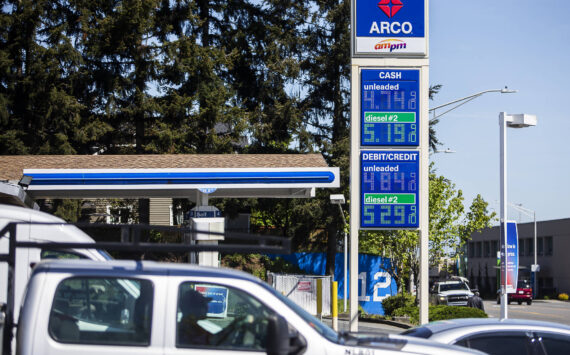By Morf Morford
Tacoma Daily Index
California has been a bellwether state in many ways for decades. Whether in popular culture like fashion or music or public policy, or a dozen other categories, California, for better or worse, has set the tone for the rest of the country.
The rest of the country, if not the world, has, until recently, had relatively stable seasons; fall, winter, spring and summer.
This has allowed fairly predictable planning in areas as varied as agriculture, vacations and construction.
California, in the past few years has given us another season. Squeezed in between spring and fall, over-taking and redefining summer, this new season, fire season, has made itself known – by smoke, among other things, to the rest of the nation.
Besides burning vast amounts of forests and grasslands, fire season has upended industries from housing and building materials to insurance claims and policies.
Housing prices have been going straight up – as have rates of homelessness. Destruction of homes by fire has made both situations far worse.
It may take years for a housing development or apartment unit to be built – and a matter of days, even a few hours in some cases, for it to be consumed by fire.
When it comes to insurance, between 2011 and 2018, the insurance industry paid an average of $4 billion a year to cover wildfire losses nationwide. In 2017 and 2018, however, California alone filed more than $20 billion in insurance claims to cover wildfire losses.
You don’t have to be a CPA to see what that does to the bottom line for insurance companies.
And you don’t need to be a housing expert to see the obvious next step – between 2015 and 2019, insurers refused to renew home insurance policies for almost a million Californians.
About a quarter of Californians — about 11 million people (almost double the population of the state of Washington)— now live in high-risk fire zones. Removing insurance from the housing equation would likely devastate communities and force millions to relocate.
So housing supply declines, demand increases, labor becomes ever more expensive or even unavailable, and building materials – in price and availability – fluctuate by the day.
As always, it’s not just California, and it’s not just fires; whether it’s fires or floods or hurricanes or rising sea levels, climate change is already wreaking havoc on property and insurance markets throughout the nation. And around the world.
Weather threats – and the resulting upheavals for markets, investors, developers and home owners – have become the defining forces of the market.
For example, Santa Rosa, the biggest city in Sonoma County, California, saw around six percent of its housing stock destroyed in the 2017 Tubbs Fire. That six percent of households needed to live somewhere, and many returned to their hometown only to see construction costs vastly increased and annual growth rate of rents tripling. And annual home price growth in Santa Rosa jumped to 12 percent from an already hot 7 percent.
Those who could not return to their home town moved somewhere.
And, for the most part, raised the cost of housing and building materials everywhere they went.
And, as I mentioned above, it’s not just California.
2021 gave us a record number, and intensity, of fires in Oregon and Washington.
Louisiana
Ever look at a map of the USA and notice the distinct boot-shape of Louisiana?
It doesn’t look like that.
Look online for a recent photo. It is frightening.
Since 1932, the USGS estimates that Louisiana has lost approximately 1,900 square miles of its coast (about one and a half times the area of the whole state of Rhode Island).
Louisiana is losing a football field of land every hour to coastal erosion. This adds up to more than ten square miles of land lost each year.
Recent extreme storms have accelerated these trends. You can see details and graphs on Louisiana here: http://www2.southeastern.edu/orgs/oilspill/wetlands.html. Industry, recreation, the environment and housing are all impacted by these changes.
The World Bank projects that, given current climate trends, conditions could push more than 200 million people to leave their homes in the next three decades and create migration and border hotspots far more crowded and dangerous than we already see.
Strong building and zoning codes and accurate hazard mapping are more important – even crucial – than ever before.
The traditional three “Ls” of housing (loans, lumber and location) have been imploded and inverted by what had been called by insurance companies “Acts of God” – those unstoppable forces of nature that seem to become more extreme every season.
And by extreme I mean more difficult to plan for and recover from – and, in virtually every category, more expensive.
Homes can be “hardened” and built to accommodate higher levels of weather-related stress or rising sea levels.
But it all costs money, and the last thing the housing market needs right now is another reason to raise prices.
The housing market also doesn’t need the increase in demand that weather/climate change is forcing upon us.
If California is the bellwether, so is the housing industry.
So, yes, the real estate market is hot. And you can expect it to get hotter.





